
Welcome to Hyperion Records, a British classical label devoted to presenting high-quality recordings of music of all styles and from all periods from the twelfth century to the twenty-first.
Hyperion offers both CDs, and downloads in a number of formats. The site is also available in several languages.
Please use the dropdown buttons to set your preferred options, or use the checkbox to accept the defaults.

| Howard Shelley (piano)» More |
The C major finger-loosener often placed at the outset of such a cycle now appears as a launch-pad for the Op 32 Preludes. This one is not as ferociously sky-rocketing as its counterpart in Liszt’s Transcendentals, but it certainly issues a challenge, not least by proposing rising motifs as a counter-balance to Rachmaninov’s habitual dying falls. A neoclassical archetype not yet explored is the swaying siciliano rhythm, which now becomes the guiding thread through the B flat minor Prelude, No 2, a piece built on two waves of acceleration, neither of which succeeds in shaking off a fundamental melancholy or in avoiding a conclusion in a mood of stoical resignation.
The Allegro vivace E major Prelude does break free, however, in another neo-Bachian aerobic workout, almost like an updated solo version of a Brandenburg Concerto. There is even, perhaps, the ghost of gigue behind its shadowy successor, the E minor Prelude No 4, whose contrasting sigh figures are eventually given their due in a languorous central section. With the rocking motion and ecstatic, flowering melody of the G major No 5 we gain the first glimpse in the Op 32 set of consoling lyricism. At the opposite extreme, the turbulent F minor is full of wrathful passion. The nearest Rachmaninov comes to cheery playfulness in any of his Preludes is the almost genial F major, No 7. Pre-figuring the Étude-tableau from Op 39 in the same key, the A minor Prelude No 8 is implacably driven, as if with the wind at its back and the rain swirling round it. A further switch to the opposite mode for No 9 brings another luxuriant tapestry woven from the thread of a sighing motif. Then come two more siciliano-based pieces, the slow B minor Prelude, No 10, with its pulverizing contrasting section, and the faster, more restrained B major Prelude.
The G sharp minor Prelude, No 12, is the last favourite encore piece in the set, its harp-like figurations running like water down the window-panes of a Russian dacha. Finally the D flat major Prelude once again closes a frame, this time harking right back to the infamous C sharp minor of Op 3; it also has a certain summative quality, thanks to its inclusion of siciliano rhythms, sighing motifs, étude figurations, an accelerating middle section and a ringing chordal apotheosis. As if to trademark his piano idiom, Rachmaninov here concludes with a piece that demands a formidable hand-stretch, of the kind he almost uniquely possessed.
from notes by David Fanning © 2009
Le prélude à dénouer les doigts en ut majeur, souvent placé au début d’un tel cycle, apparaît maintenant comme un tremplin pour les préludes op. 32. Il ne monte pas en flèche avec autant de férocité que son homologue dans les Études d’exécution transcendante de Liszt, mais il lance certainement un défi, en proposant notamment des motifs ascendants qui contrebalancent les habituelles descentes de Rachmaninov qui vont en disparaissant. On trouve un archétype néoclassique qui n’a pas encore été exploré: le rythme sicilien oscillant, qui devient maintenant le fil conducteur dans le Prélude no 2 en si bémol mineur, pièce construite sur deux vagues d’accélération, dont aucune ne parvient à se débarrasser d’une mélancolie fondamentale ni à éviter une conclusion dans une atmosphère de résignation stoïque.
Le Prélude en mi majeur, Allegro vivace, se libère vraiment dans un autre séance d’aérobic «néobachienne», une sorte de version soliste modernisée d’un concerto brandebourgeois. Peut-être y a-t-il même le fantôme d’une gigue derrière son mystérieux successeur, le Prélude no 4 en mi mineur, dont les figures gémissantes contrastées se voient finalement rendre justice dans une langoureuse section centrale. Avec le mouvement de balancement et la mélodie extatique florissante du Prélude no 5 en sol majeur, nous avons le premier aperçu de lyrisme consolant de l’Opus 32. À l’extrême opposé, le turbulent Prélude en fa mineur regorge de passion courroucée. Le prélude dans lequel Rachmaninov se rapproche le plus de l’enjouement joyeux est le presque cordial Prélude no 7 en fa majeur. Préfigurant l’Étude-tableau de l’opus 39 dans la même tonalité, le Prélude no 8 en la mineur est mené de façon implacable, comme s’il avait le vent dans le dos, la pluie tourbillonnant autour de lui. Un nouveau passage au mode opposé, dans le Prélude no 9, donne lieu à une autre tapisserie luxuriante tissée avec le fil d’un motif soupirant. Viennent ensuite deux autres pièces qui reposent sur le rythme sicilien: le lent Prélude no 10 en si mineur, avec sa section pulvérisante bien contrastée, et le Prélude en si majeur, plus rapide, plus retenu. Le Prélude no 12 en sol dièse mineur est le dernier bis favori du recueil, ses figurations comparables à une harpe coulant comme de l’eau sur les vitres d’une datcha russe. Finalement, le Prélude en ré bémol majeur clôt une fois encore un cycle, évoquant cette fois le tristement célèbre Prélude en ut dièse mineur de l’opus 3; en outre, c’est une sorte de sommaire puisqu’il comprend des rythmes siciliens, des motifs gémissants, des figurations d’étude, une section centrale qui accélère et une apothéose retentissante en accords. Comme s’il voulait apposer la marque de son langage pianistique, Rachmaninov conclut ici avec une pièce qui exige une incroyable étendue de la main, tel que lui seul ou presque en possédait.
extrait des notes rédigées par David Fanning © 2009
Français: Marie-Stella Pâris
Der Finger-Auflockerer in C-Dur wird oft an den Beginn solcher Zyklen gestellt und fungiert hier als Startplatz der Préludes op. 32. Es ist dies nicht so wild und in die Höhe schießend wie das Pendant in Liszts Transzendentalen Etüden, aber es stellt doch eine Herausforderung dar, nicht zuletzt aufgrund der aufsteigenden Motive, die ein Gegengewicht zu Rachmaninows gewohnheitsmäßigem, absterbendem Herabfallen bilden. Ein noch nicht weiter erkundetes neoklassisches Modell ist der hin- und herschwankende Siziliano-Rhythmus, der nun zum Leitfaden im b-Moll Prélude, Nr. 2, wird. Dieses Stück ist auf zwei beschleunigenden Wellen aufgebaut, die es jedoch beide nicht schaffen, einerseits die melancholische Grundstimmung abzuschütteln und andererseits einen Schluss in stoischer Resignation zu vermeiden.
Das Allegro vivace in E-Dur reißt sich erfolgreich und energisch los, klingt jedoch fast wie eine modernisierte Soloversion eines Brandenburgischen Konzertes. Möglicherweise spukt sogar der Geist der Gigue im Hintergrund des schattenhaften, folgenden Stücks herum, dem e-Moll Prélude Nr. 4, dessen kontrastierende Seufzerfiguren schließlich in einem trägen Mittelteil voll zum Ausdruck kommen. Mit dem Wiegen und ekstatischen Aufblühen der Melodie des G-Dur Préludes Nr. 5 wird uns erstmals Einblick in die tröstende Lyrik des Zyklus op. 32 gewährt. Einen krassen Gegensatz dazu bildet das turbulente f-Moll Prélude, das voll zorniger Leidenschaft ist. Einer spielerischen Fröhlichkeit kommt Rachmaninow in dem geradezu genialen F-Dur Prélude Nr. 7 am nächsten. Das Prélude Nr. 8 in a-Moll kündigt das Etude-Tableau aus op. 39 in derselben Tonart an und hat zudem einen unerbittlich getriebenen Charakter, als ob es vom Wind vorwärts geweht und dabei nassgeregnet würde. Ein wiederum kontrastreicher Wechsel bringt in Nr. 9 einen weiteren üppigen Teppich hervor, der aus dem Faden des Seufzermotivs gewebt ist. Darauf folgen zwei Siziliano-Stücke, das langsame h-Moll Prélude Nr. 10 mit einer gegensätzlichen, mahlenden Passage, und das schnellere und beherrschtere H-Dur Prélude.
Das gis-Moll Prélude Nr. 12 ist das letzte beliebte Zugabenstück des Zyklus, dessen harfenähnliche Verzierungen wie Wasser an den Fensterscheiben einer ländlichen russischen Datscha herunterlaufen. Das Des-Dur Prélude schließt wiederum den Kreis und bezieht sich diesmal auf das berüchtigte cis-Moll Prélude aus op. 3 zurück. Auch hat es eine gewisse zusammenfassende Funktion: es erklingen Siziliano-Rhythmen, Seufzermotive, Etüden-Figurationen, ein schneller werdender Mittelteil sowie eine nachhallende akkordische Apotheose. Als ob er hier seinen pianistischen Ausdruck urheber rechtlich schützen wollte, schließt Rachmaninow mit einem Stück, das eine so riesige Handspanne erfordert, wie praktisch nur er sie hatte.
aus dem Begleittext von David Fanning © 2009
Deutsch: Viola Scheffel
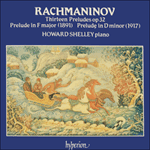 Rachmaninov: Preludes Op 32 Rachmaninov: Preludes Op 32‘Elegant and scintillating’ (Gramophone) ‘Readings of a true keyboard aristocrat … exceptional finesse … mirrored in beautifully natural and refined sound’ (BBC Record Review)» More |
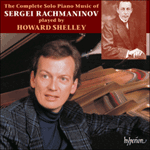 Rachmaninov: The Complete Solo Piano Music Rachmaninov: The Complete Solo Piano Music‘A fine achievement from Howard Shelley and Hyperion alike. These superbly recorded, idiomatic readings demonstrate Shelley's virtuoso pianism and aff ... ‘A significant testimony to Howard Shelley's artistry. Pianistically impeccable, he understands what Rachmaninov was about’ (Gramophone)» More |
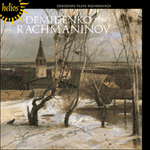 Rachmaninov: Demidenko plays Rachmaninov Rachmaninov: Demidenko plays Rachmaninov‘A marvellous disc … this excellently chosen selection of Rachmnaninov's finest solo piano works is played with superb panache by Demidenko ... ‘A marvellous disc’ (BBC Music Magazine)» More |
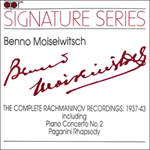 Benno Moiseiwitsch - The complete Rachmaninov recordings, 1937-43 Benno Moiseiwitsch - The complete Rachmaninov recordings, 1937-43This is a recording from Appian Publications & Recordings Ltd (to quote the full title)—the label invariably more familiarly known simply as "APR". Since its foundation in 1986, APR has won an enviable reputation as a quality label devoted ...» More |
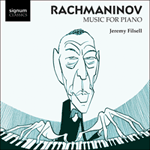 Rachmaninov: Piano Music Rachmaninov: Piano MusicJeremy Filsell is one of very few performers to have established a virtuoso concert career as both a pianist and organist on the international stage. This recital album explores Filsell's lifelong love of Rachmaninov's piano music, surveying selec ...» More |
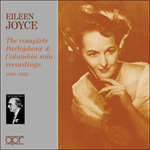 Eileen Joyce - The complete Parlophone & Columbia solo recordings Eileen Joyce - The complete Parlophone & Columbia solo recordings‘Listening to Joyce is strangely addictive. One cannot wait, as it were, to read the next chapter. She shares with Kreisler and Tauber the same unteac ... ‘The quality that comes across in these performances is the sheer joy of playing. Joyce possessed a formidable technique and an interpretative mind th ...» More |
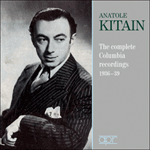 Anatole Kitain - The complete Columbia recordings, 1936-39 Anatole Kitain - The complete Columbia recordings, 1936-39Anatole Kitain (1903–1980) was an exact contemporary and fellow pupil of Vladimir Horowitz in Kiev, where he studied, as did the slightly older Simon Barere, with Felix Blumenfeld. All three developed fabulous techniques and were romantic pianists ...» More |
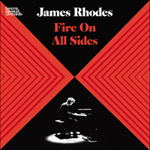 Fire On All Sides Fire On All SidesThis album was recorded to accompany James Rhodes’ new book of the same name—an intimate exploration of what it’s like to be a celebrated pianist embarking on a world tour, when you have multiple voices jostling in your head, sabotaging your happi ...» More |
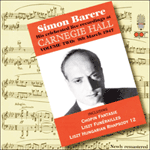 Simon Barere – His celebrated live recordings at Carnegie Hall, Vol. 2 - 9 March 1947 Simon Barere – His celebrated live recordings at Carnegie Hall, Vol. 2 - 9 March 1947 |

